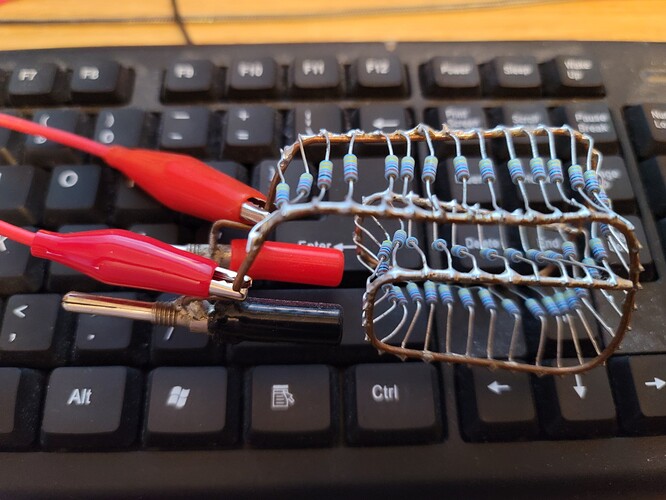Hi @Kravchenko_Audio, I spent a few hours last week looking at benefits of stepped sine. I think there are two tests you could try to replicate:
First, look at swept output results using a short FFT versus long FFT. In the plot below, you can see an 8" speaker test. There were two sweeps: A 32K FFT (32k/48k=666 mS) and a 1M FFT (1M/48k=22 seconds). If the mechanical response interacting with the sweep was a sizable contributor, then we’d see some kind of difference when you had a 33X difference in sweep speed. But you don’t see much of a difference at all. You see a bit more noise, but this comes from the reduced energy associated with the 666 mS sweep.
Next, note on the plot above I show the zero phase frequency. At 33.92 Hz, the phase is 0.132 degrees–effectively zero. Since the phase is zero, we can treat the speaker as a resistor and do the complex math using just a calculator.
So, set a sine for 33.92 Hz (disable “round to eliminate leakage”). And measure voltage and current. I’m using the QA461 with the -20 dB output monitor, so the 31.12mV across the speaker is actually 311.2mV. And the current monitor is 1 ohm (effective) and that’s showing 8.529 mA. So, if the phase is zero at this point, that suggests 36.48 ohms
Now, let’s check back to the swept plots with some lines added. Here, we can see at zero phase (33.92 Hz) the impedance is around 39 ohms.
OK, now let’s look using the oscilloscope visualizer. In the next release, the scope will allow you to display phase:
And here we can see the phase isn’t zero: It’s about 14 degrees. Interesting. So, our math above isn’t quite correct.
OK, so now I step the sine freq 0.25 Hz at a time, and adjust to get close to 0 degrees. This frequency is 31.90 Hz.
And now I go back in and compute impedance and I get 311.2/8.10 = 38.41 ohms. This agrees much better with the sweep. But the frequency isn’t quite the same.
So, speed of sweep didn’t have much of an impact. However, manually hunting for zero phase with a sine yielded zero phase at 31.3 Hz and Z of 38.41 ohms. Sweep yielded 33.92 Hz and 39 ohms. So, the Z is very close (1.5%), but there’s a discrepancy (31.3 Hz versus 33.92 = 8.3%) in Fs.
This might be a an interesting test to help evaluate issues are seeing. What do you think?












